Pack the Shoulder for Protection and Power
by Jay Armstrong, RKC Team Leader
November 4, 2009
Strength is a skill. Much of this skill is about proper alignment of the bone structure during the strength movement. Overhead presses with a kettlebell require proper orientation of the shoulder for maximal effectiveness.
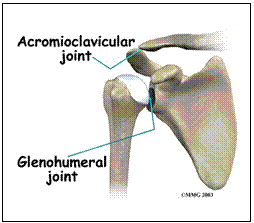
The shoulder joint (or more technically, the glenohumeral joint) is highly mobile. Unfortunately, this mobility comes at the price of reduced stability. The top part of the upper arm bone can move away from the opposing joint surface. This very often happens when your reach for something far away from you. The muscles surrounding this joint become weaker as the space inside this joint increases. This separation in the shoulder joint reduces muscle activation, increases the instability of the joint, and increases the risk of injury.
Now, here is the problem: when you press a kettlebell overhead, the arm moves away from the body and the muscles that work to separate the shoulder joint are encouraged to fire. You will be stronger and press more safely if you can connect the upper arm to the opposing joint surface or “pack” the shoulder.
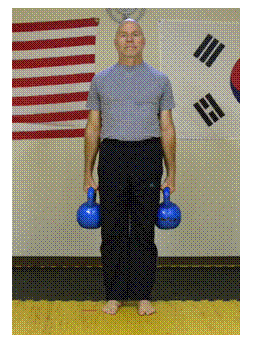
Here’s how to solve the problem.
Firstly, you must become acquainted with how a “packed” shoulder feels. Secondly, you must work to duplicate this feeling during the press.
How does a “packed” shoulder feel? It feels different at the various positions of the arm. The easiest way to feel a packed shoulder is with the arms down holding some weight. Pick up two kettlebells and stand erect with your arms at your side. Your body will instinctively “pack” the shoulders. If the weights are not very heavy, you can try to relax your shoulder and allow the joint to open up. You will find this to be VERY uncomfortable. Your body knows that the best way to hold an object in this position is to minimize the space in the shoulder joint and it will do this automatically.
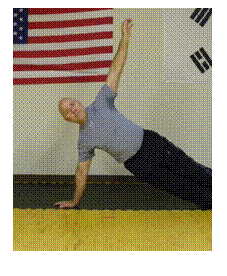 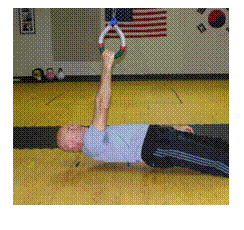 When the arm is at 90 degrees to the body it becomes more difficult to feel this “packing”. The two best ways to feel this are the 1-arm side plank and hanging by 1-arm with the body parallel to the floor. In these two positions, the space in the joint is usually compressed automatically. When the arm is at 90 degrees to the body it becomes more difficult to feel this “packing”. The two best ways to feel this are the 1-arm side plank and hanging by 1-arm with the body parallel to the floor. In these two positions, the space in the joint is usually compressed automatically.
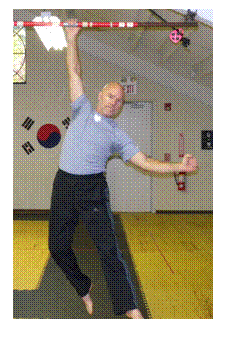 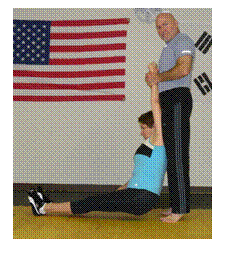 When the arm is overhead, the “packed” feeling is the most difficult to discern. The two best ways to feel it are the Turkish Getup partner lift and hanging from a bar by one arm. To perform a Turkish Getup partner lift sit on the floor as shown and have your partner try to pick you up. You must strongly connect the arm to the body in order to do this. (Note: you should be VERY careful and sure of your abilities before attempting to hang on a bar by one arm!) When the arm is overhead, the “packed” feeling is the most difficult to discern. The two best ways to feel it are the Turkish Getup partner lift and hanging from a bar by one arm. To perform a Turkish Getup partner lift sit on the floor as shown and have your partner try to pick you up. You must strongly connect the arm to the body in order to do this. (Note: you should be VERY careful and sure of your abilities before attempting to hang on a bar by one arm!)
How do you duplicate this feeling during your press?
One of the ways is to practice with a light weight. The muscles that separate the shoulder are less likely to become involved when the weight is light. Use your powers of imagination to pretend the weight is heavy. Use your total body tension technique and your power breathing to press the bell. But, intensely focus on the packed feeling in your shoulder during the press.
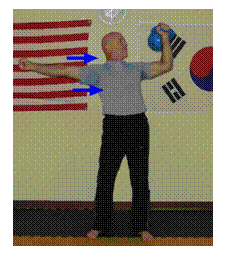
Another way achieve this “packed” feeling is to recruit the opposite side of your body. This creates some neuromuscular confusion. Clean a kettlebell with one hand. Put the other arm out to the side and make a tight fist. Then, as you begin to press the kettlebell, strongly pull the opposite arm into the socket. Imagine that someone is trying to pull your arm off and you are resisting them. You will notice that the pressing arm will stay packed throughout the press. You will press better and more safely. |